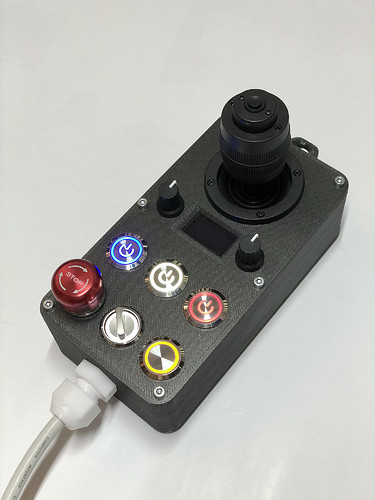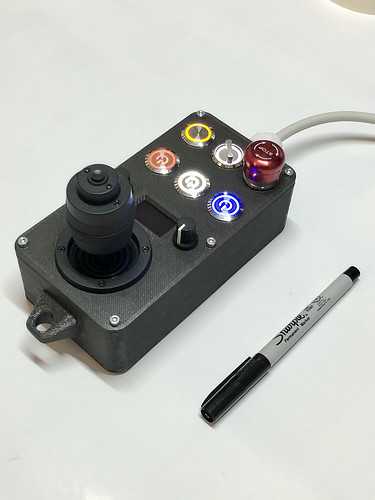Moin moin everybody,
long story short: due to coronavirus i suddenly got plenty of time  (mehhh) since spring this year. Thus I decided to do something useful. During university times some years ago I’ve enjoyed CAD modeling, constructing things and working with 3dprinters. Early this year I researched what was the best price/performance ratio and consequently I bought the Artillery Sidewinder X1 and dived into the printing territory.
(mehhh) since spring this year. Thus I decided to do something useful. During university times some years ago I’ve enjoyed CAD modeling, constructing things and working with 3dprinters. Early this year I researched what was the best price/performance ratio and consequently I bought the Artillery Sidewinder X1 and dived into the printing territory.
Soon I found the MPCNC burly project so I wanted to start right away but then I’ve read that there would be an update soon. It was a little hard to wait but I think it was worth it, so I used the meantime to read a lot in this forum, certain Facebook groups etc. and last but not least following the main Primo thread as a silent reader waiting for the Primo release.
A few weeks after the 25mm F version was published I ordered in the end of July most of the parts and started the project of my first CNC machine, knowing that some parts may take a while to arrive from china.
During planning I wanted to be sure what total cost I had to expect with my specific setup so I used some conservative estimates to be on the good side  …financially.
…financially.
Since I am always trying to get the best price/performance parts with some exceptions, like shipping time, I created a project file in excel including a 3D printed parts sheet, a detailed list of materials and an actual data sheet of my Primo.
I recommend that to everyone having your things organized, errors will be minimized and you know your current project status.
Now the interesting part:
Facts:
- Workspace: 800x500x150mm
- Table size: 1232x941mm
- Water-cooled 800W ER11 spindle & 1,5kW VFD
- 25x2mm Stainless Steel tubes (V2A), 240k sanded
- Filament: ERYONE Sparkle PLA Black & Red (Metallic effect)
- Board: OpenCNC Shield (relatively new)
Some impressions:
Organisation:
First Prints: here I checked the dimensional accuracy if the bolts and nut would fit.
Some sparkling grey:
Core print fail due to clogged nozzle (first time having this issue, reason is unknown. I disassembled the extruder, changed nozzle and all further prints were good). You all said, it’s a learning experience and you were 100% right! 
Succesfull core print:
Almost finished printing:
Last week I designed a machine table to meet my requirement to be transportable in a car and to withstand several dis- and assemblies. The latter I achieved with M6 thread screws, nuts and threaded sockets. The red quadrant is the machine footprint (height not accurate) and the blue one is the outer feet edge size.
The table top is screwed to a frame to avoid bending and torsion of the 18mm “Siebdruck” plate. This part can easily be lifted and moved without the need of the lower table construction. I left additional space on the table top for an enclosure.
I also printed a drilling template to save a lot of time and avoid measuring errors.
The hardest thing is to get the 100% accurate computer models where all fits together to a tangible thing and actually build it. But in the end it turned out very well, thanks to the templates I think:
So far so good, I am looking forward to assemble the Primo. But first, the table must be completed.
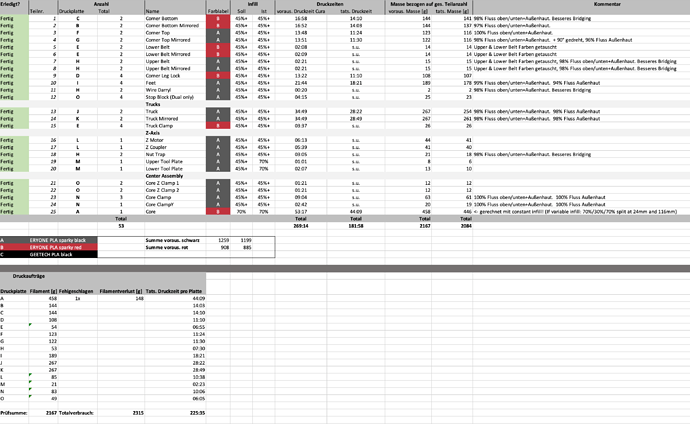
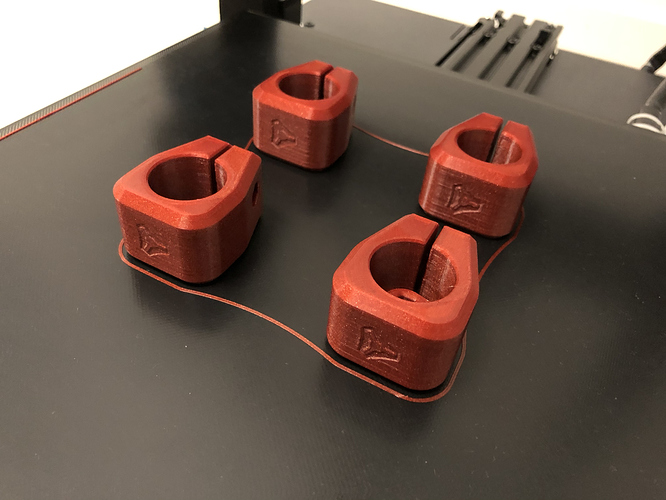
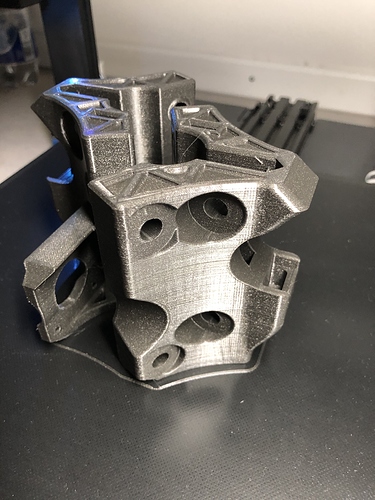
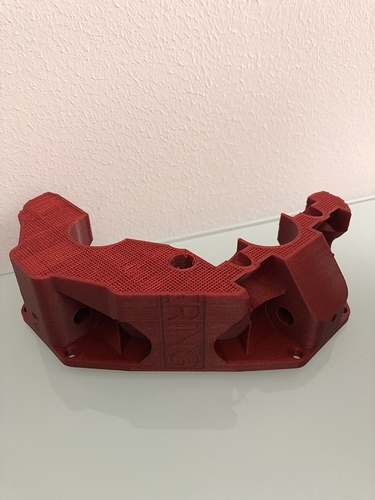
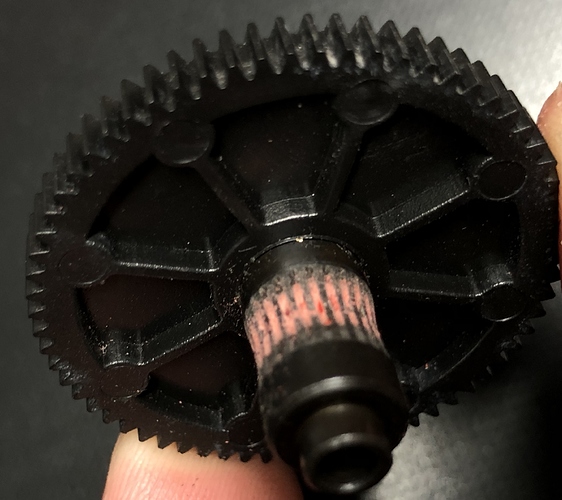
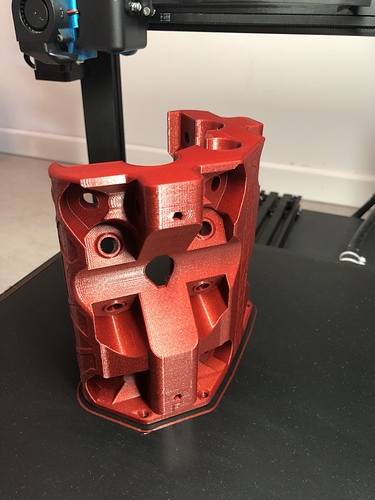
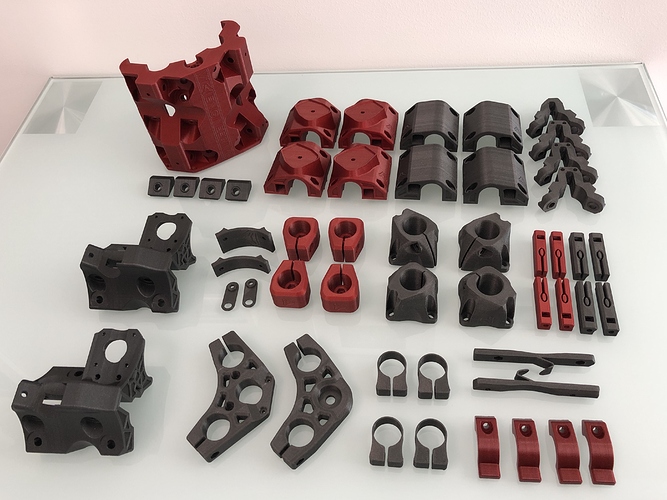
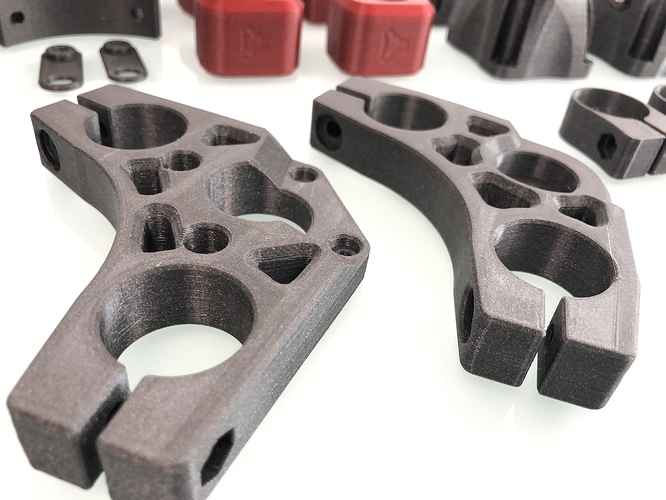
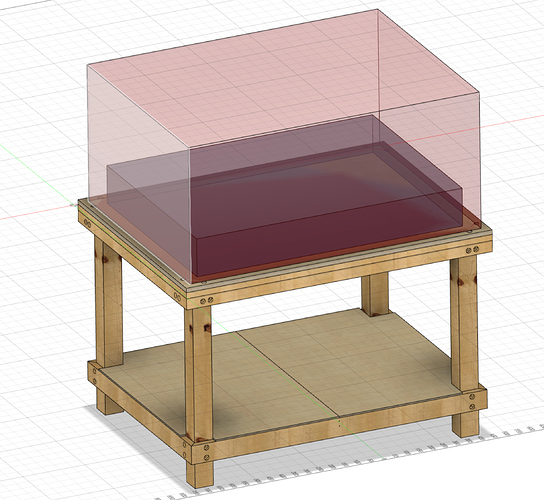
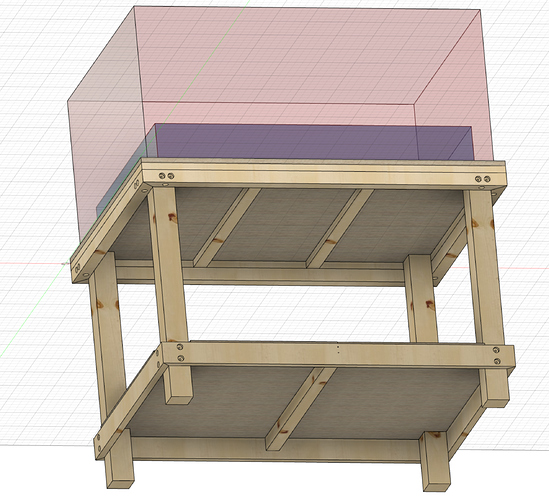
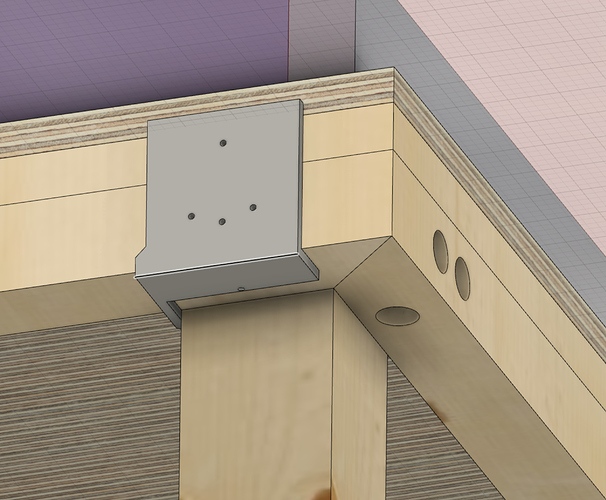
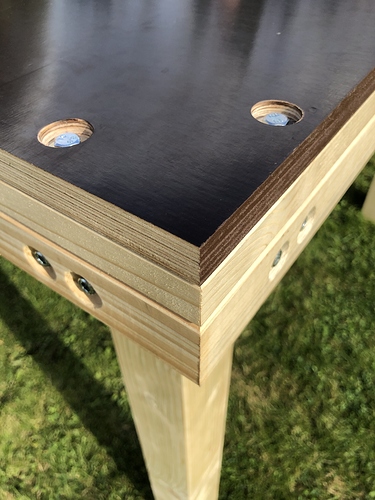
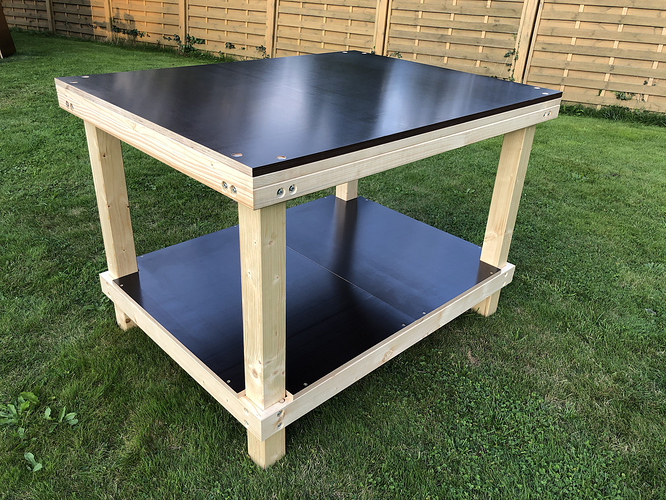
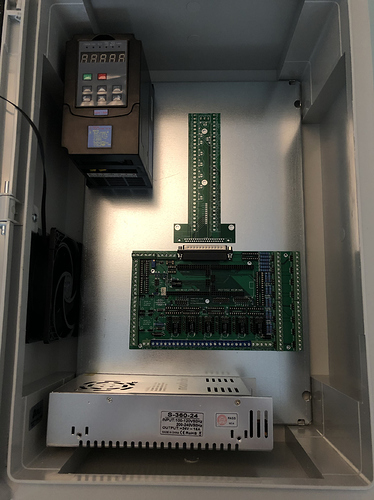
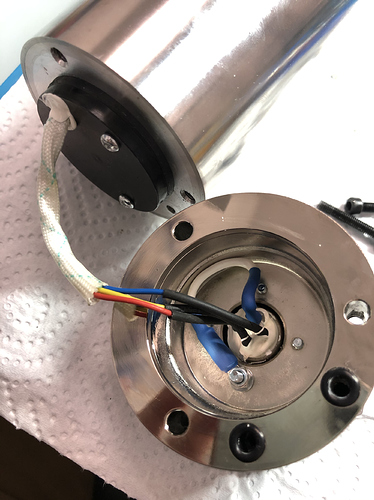
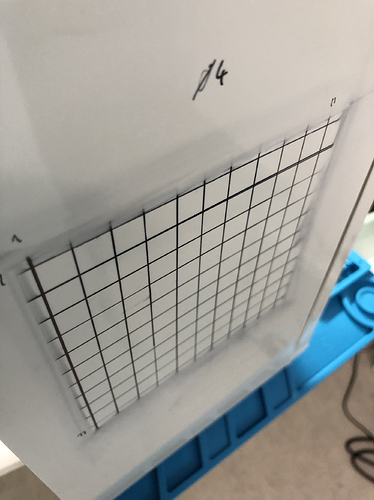
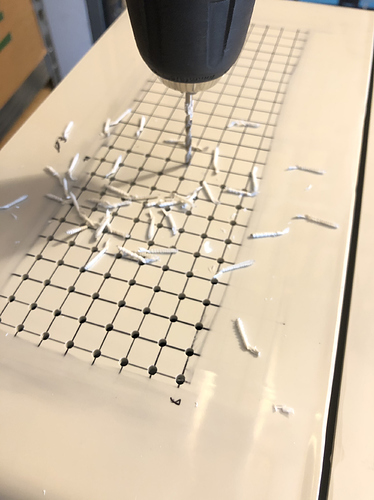
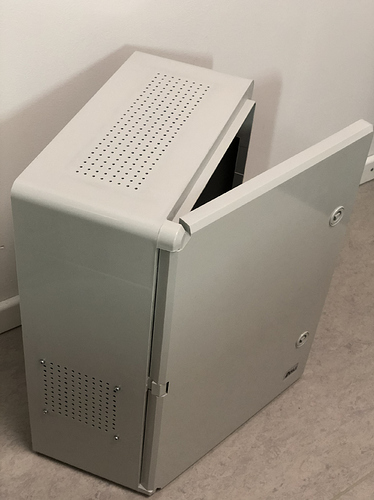
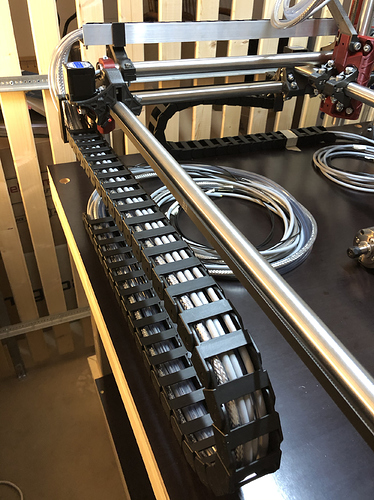
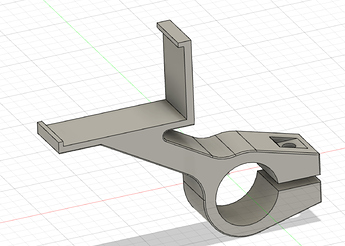
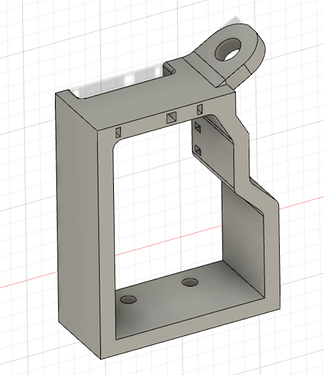
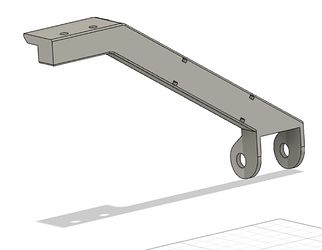
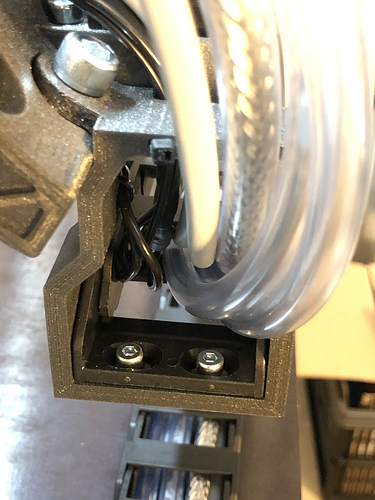
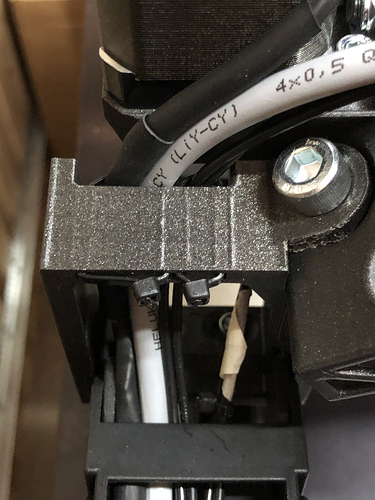
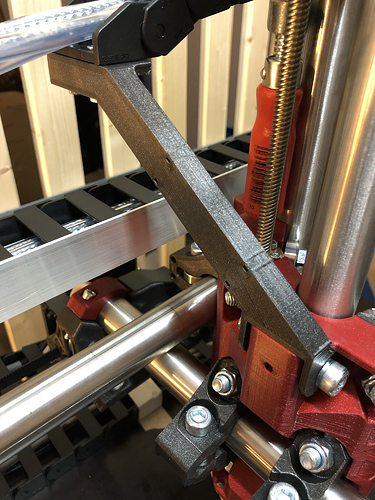
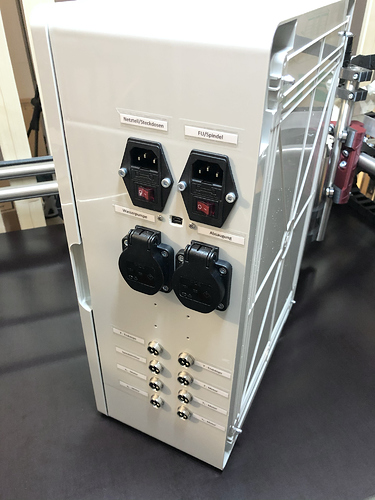
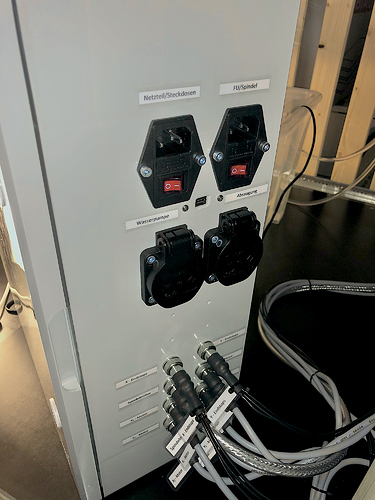
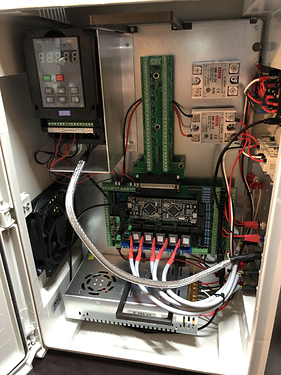
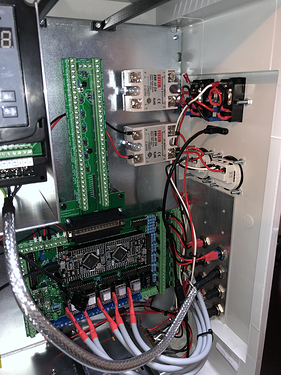
 but I got a few oily spots on the water surface, so good to have it washed.
but I got a few oily spots on the water surface, so good to have it washed.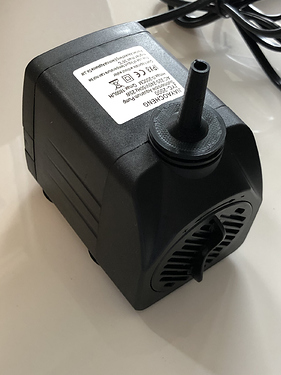
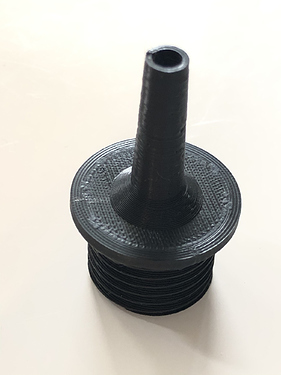
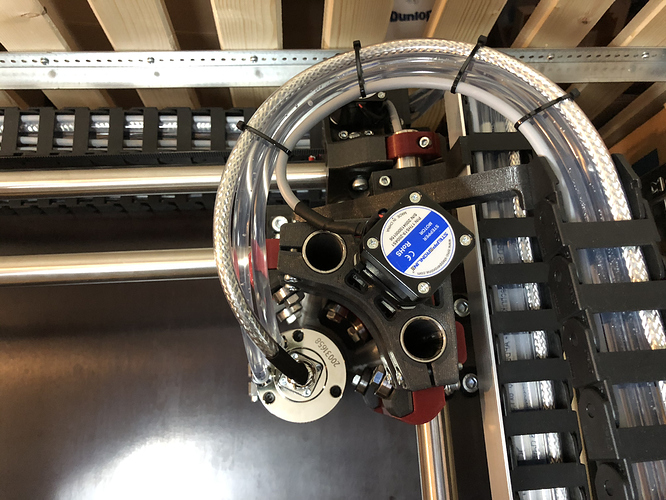
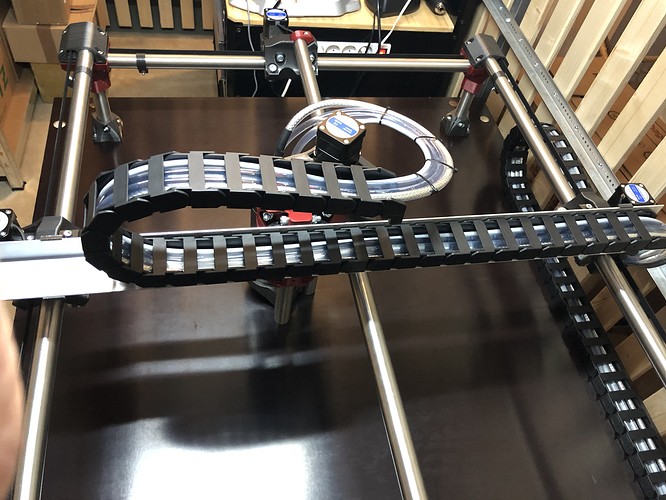
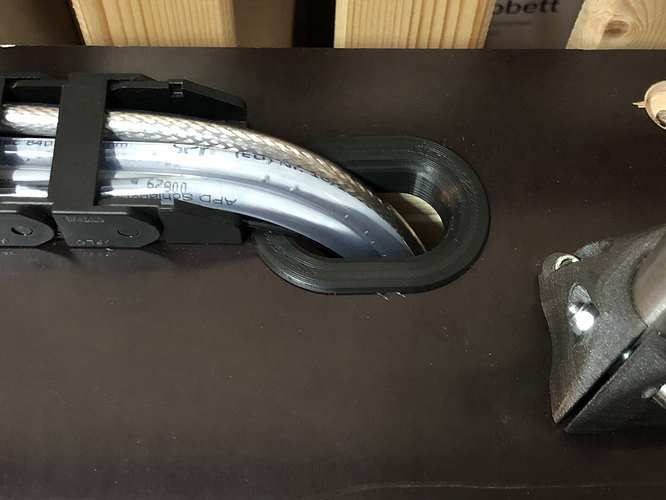
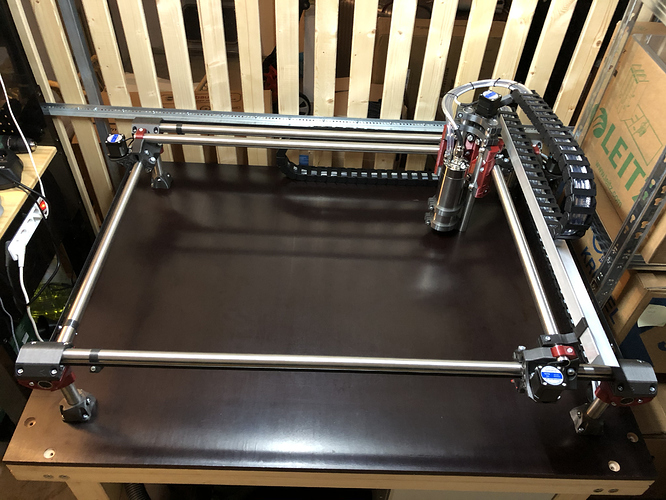
 That control box looks so great.
That control box looks so great.
